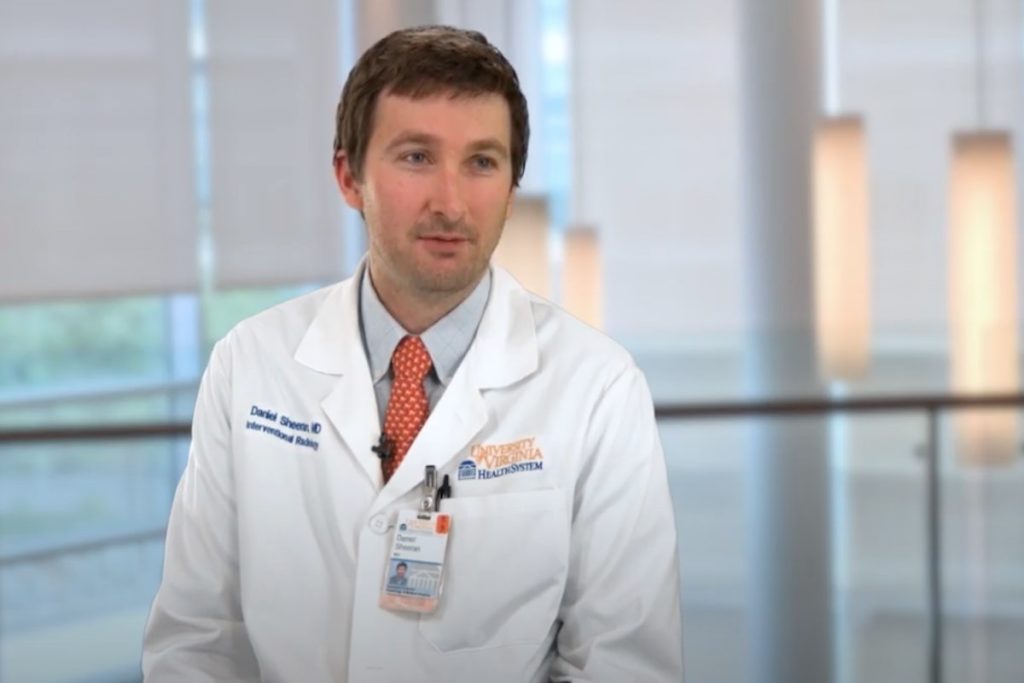Interventional radiology uses minimally invasive techniques and imaging guidance during surgery. This makes it easier for our surgeons to diagnose and treat patients with many diseases, including:
- Arterial disease (renal artery and peripheral artery disease)
- Liver cancer
- Enlarged prostate
- Thyroid nodules
- Uterine fibroids
- Deep vein thrombosis
Meet Interventional Radiologist Daniel Sheeran, MD
Interventional radiologist Daniel Sheeran, MD, treats patients with cancer and leg vein issues.
1. Why did you become a doctor?
I wanted a profession where one makes a difference in people’s lives, where you wake up every day looking forward to your work.
2. Why did you choose your specialty?
Interventional radiology is a combination of clinical and procedural skills, plus image interpretation. It provides the ideal mix of all the components of medicine that I enjoy, in addition to always having new and exciting technologies we can use to benefit patients.
3. What’s one thing about your specialty that might surprise people?
That we can travel to nearly every part of the body from one access point. This provides diagnostic imaging and therapeutics through one small incision that requires a bandaid once we’re done with the procedure.
Blood Clot in Leg?
Deep vein thrombosis isn’t life-threatening, but it can lead to serious health problems. If you notice symptoms, contact your provider.
4. What’s the most exciting thing/research happening in your field right now?
There are multiple new advances in the oncology field, peripheral arterial disease (PAD), and deep vein thrombosis (DVT) care.
One recent exciting development is the growth in the availability of dedicated stent technology for use in venous obstructions, improving patency and clinical durability of our interventions.
5. Where did you grow up?
I’m a local resident from Charlottesville, VA.
6. Who is your inspiration or hero?
My parents instilled a drive as a young child to pursue my passion and make a difference.
7. What’s your favorite thing about working at UVA?
Our ability to provide collaborative and multi-disciplinary care for our patients and ensure that we have our patients’ best interests at heart no matter what.
We do minimally invasive image-guided procedures. So, we see patients on an in-patient out-patient setting, and if they do need something, like that type of procedure, that is what we provide for them.
My grandfather was an internal medicine physician. When I was growing up, I got to see him as a physician and knew I always wanted to do something where you wouldn’t just be sitting at a desk. I wanted to work where you would be with people on a daily basis, and doing something where you felt good about your job when you went home at the end of the day.
I think the most rewarding part has been: not all of our procedures are curative. Unfortunately, some of our procedures are palliative in nature. But the curative ones, when you see those patients at four weeks, at eight weeks, at a year, and see they are still doing well; it’s nice to see those patients. We’ve made an incision the size of a fingernail, and yet here we are with a curative result for their problem.
